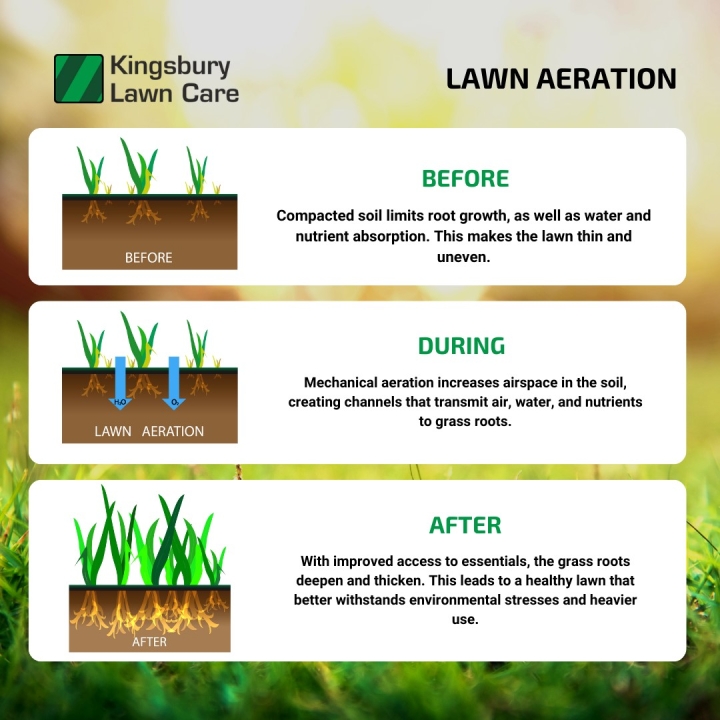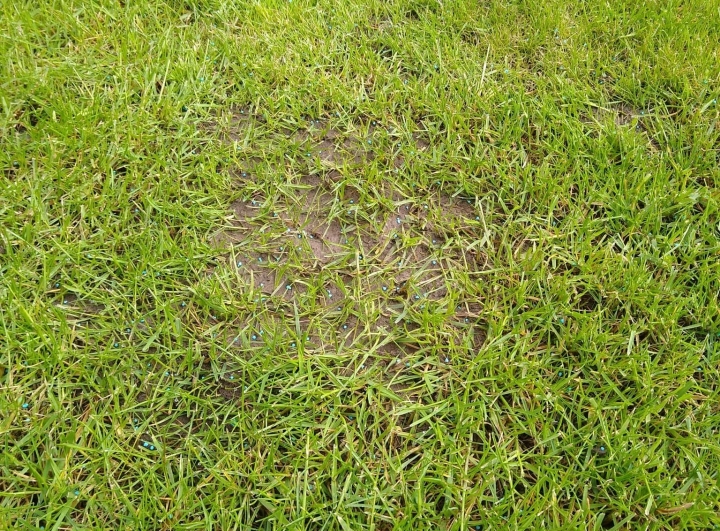The Best Treatments for Ants in Lawns!
Late Spring always see's the seasonal explosion of ants in lawns - or at least them coming to the surface anyway! Warmer and wetter weather of late only serves to encourage their activity both below and above the ground. Without careful management, their nest building can cause unsightly damage to your lawn. What can we do!?
Are Ants Bad for Lawns?
Firstly, it's not all bad news. Ants can be found within most UK lawns, working to de-compact the soil and are part of a healthy garden ecosystem. Often, their nests will be up to 2 feet (60cm) deep beneath a lawn, with thousands of ants working to provide for the queen ant. With ants working in such large colonies, a lot can be achieved in a short space of time during the spring and summer when they are most active, and this includes moving a lot of soil up to the surface of our lawns!
Ants do not damage the grass directly. If anything, through aerating the soil they can be seen to benefit lawns. However, the soil that ants bring to the surface will need management to be sure that your lawn stays smooth and that grass plants aren't getting buried in this fresh soil. Simply walking on, our mowing over this soil without dealing with it is what causes problems for lawn lovers.

Why are Ants settling in my Lawn and not Elsewhere?
Ants will be most active in turf that is not being disturbed. A golf course for example is highly unlikely to see large ant colonies in that much of it is being mown on a very frequent basis, and in use by golfers. Areas of rough that gain lower foot traffic and far less maintenance is far more likely to be deemed as desirable by ants..
Ants may have settled in your lawn due to infrequent mowing and a historical lack of scarification and aeration. When a lawn is maintained to a high standard, we find ants far less of an issue. Like many living things, they will settle where they feel most safe.


Regular mowing, along with annual scarification and aeration will help in deterring ants. When the scarification and aeration of ant mounds is considered, remember that reseeding following this work will be a must. We complete many lawn renovations where we scrape the ant hill soil level before mechanical work to give a smoother lawn and to be sure we don't blunt our scarifier blades even more than we need to!
Management of Ant Hills in Lawns
Firstly, before cutting the lawn, wait for a dry day where the soil that has been brought to the surface by the ants has had chance to dry. This simply needs to be brushed away to stop the mound from forming., stopping the grass leaves from being buried by the fresh soil. Think of it as free top dressing!
As this ant activity is only seasonal, this may be enough to keep your lawn in tip-top condition.
If you have historic ant hills, then this mound may need scraping off first, brushing away loose soil to make the lawn area level again, before reseeding. The ants may well start to bring further soil to the surface, but the mound will be greatly reduced to the point that your mower won't be at risk of scalping the area when mowing.

Control of Ants in Lawns?
Ants are very difficult to control in lawns. To fully destroy an ants nest is close to impossible, but their impact can be reduced. There is no professional product for the control of ants, but there are two DIY approaches to ant control in lawns:
Ant Powders
Ant powders can be applied but for best results, need to be applied as directly as possible to the ant nests. Use a spade / fork to open the nests before using such products. They are of little use on the surface of the lawn and may only work to harm the grass. The use of boiling water may harm some ants, but it will also burn the roots of your grass! Ants prefer dry conditions, so flooding the area may encourage them to head elsewhere.
Biological Control - Nematodes
Nematodes are commonly used for the control of leather jackets and chafer grubs, however a different type of nematode can be used for ant control. As with any biological product, this requires an adequate soil temperature to be effective, and plentiful watering both before and for two weeks following the application. Storage, use and aftercare advice needs to be followed strictly for a biological application to be effective, but they are proven to be so IF you are prepared to do a proper job of it!
Get Pricing for Lawn Treatment Services - 60 Second Quotation, 24/7
If a lawn treatment service can compliment your own lawn care efforts, then head to our Instant Estimate feature where getting a quotation sent to your inbox is as easy as 1-2-3.
1) Complete your details
2) Click and drop the pin on your house
3) Use the mapping tool to trace your lawns for approximate measurement and hit submit
There is no ongoing contract – see our online reviews and results for yourself! If you’re not one for technology or there’s a few unanswered questions, then we’re available over the phone during usual office hours on 01827 826123.
